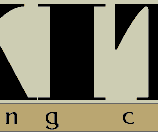 Save this page (86 kb)
Save this page (86 kb)
DIVISION OF THE AKITA DOG INTO TWO BREEDS BY THE FCI
By HIROSHI KAMISATO
NIHONKEN KOUZA (JAPANESE DOG LECTURES)
(Ref: Aiken No Tomo, pp. 1257 - 1259, Jan., 2000)
Editor:
I would like to ask you about the particulars of the FCI's decision at their general meeting to divide the Akita dog into two breeds.
Kamisato:
During the 1950's the offsprings of Kongo of the Dewa line and their descendants of the Dewa line went to the Untied States in large numbers and charmed many of the dog fans there.Breeders then began to increase, and in 1956 the Akita Club of America (ACA) was established, and a registry was also started. A dog standard based on that of the Akitainu Hozonkai (Akiho) was also created, dog shows were held and the Akita dog became very popular. However, since the AKC did not recognize and of the Japanese dog registries, unable to import any more dogs from Japan after the ACA gained its recognition from the AKC, the Akita dog in the United States remained the type of the mid 1950's and were developed individually into the American Akita of today.
Meanwhile, based on the idea that Akita dogs of the Dewa line were not true Akita dogs in Japan, dogs of the Ichinoseki line began to be widely used to rapidly purify toward the Japanese dog type, mainly under the guidance of the Akitainu Hozonkai (Akiho) and efforts to committed dog breeders. Although reciprocal recognitions of the dog registries between the JKC and the AKC occurred in 1992, due to lack of exchanges of bloodlines between the two organizations for approximately 40 years, two different types of Akita dogs evolved, although they were supposed to be the same Akita dog.
Editor:
How did the FCI divide the Akita dog into two separate breeds?
Kamisato:
During the 1980's the JKC became fully affiliated with the FCI. At that time, MR. Toyosaku Kariyabu, the director of the JKC at that time, insisted that"Akita dogs from Japan are the true Akita dogs" and was able to have the FCI accept this concept.
When the FCI accepted the Japanese Akita dog standard, the American type of Akita dogs with the black mask and pinto coats that were winning in the FCI shows in the past were no longer able to do so. As a result of this, Europeans began to rapidly change over to the Japanese type. However, dog breeders in many of the Latin American nations did not have any Akita dogs of the Japanese type. Much confusion occurred when they were told initially that they were purchasing Akita dogs, and when they were told afterwards that their dogs were not the true Akita dogs. Because of this, some requested for privilege of showing their dogs in the variety group in Latin America.
Anotherproblem was created when some dog breeders outcrossed the American type to the Japanese type to produce Akita dogs of the third type. This led to insistence by some members of the FCI from various countries to divide the breed into two groups. At the FCI executive committee's meeting, the JKC became the nucleus to work with the American dog organization to solve this problem. At first, the intention was to come to a solution in about five years. However, requests came in from Latin American to divide the breed before the Mexico's 1999 World Show. Because of this, the FCI Standard and Scientific executive committees worked together during the second World Akita Congress and decided at the Mexico General Meeting in June 1999 to divide the breed.
Editor:
Wouldn't you say that it would have been easier if the names of the divided dogs were named the Akita and the American Akita: I believe that this would have been clearer to the Japanese.
Kamisato:
The FCI has been told that the Akita dogs in Japan are the true "Akitas", and therefore, one is unable to call the "American Akita" and "Akita".
Editor:
Could such a split into two types cause come confusion within the FCI?
Kamisato:
In order to avoid any such confusion, we created a committee of three Akita dog experts consisting of breeders and judges which met from July 1 to December 31 of 1999 with people in FCI countries to formulate a program to divide into the "Japanese Akita" and the "Great Japanese Dog"
Editor:
How are the AKC and the KC viewing this division?
Kamisato:
The AKC and the KC are not affiliated with the FCI. However, we have kept close contacts with the AKC. For the past three years we have attended in succession the Akita Club of America (ACA) National Shows, as well as meeting AKC officials in New York. Furthermore, a representative from the AKC has participated in every meeting of the World Akita Congress that were held in Japan and in Europe. Because of these meetings we have developed a trusting relationship, which has enabled us to discuss the topic of splitting the breed into two groups. The AKC has shown much interest and has sent Mr. James Crowley, who is the AKC Secretary, to our meetings between the JKC and the ACA.
The AKC has a working plan already implemented should the division come about. However, in the United States, the Akita dog standard is determined not by the AKC, but by the ACA. The ACA has a membership of more the 700 members, and a two/thirds approval is necessary for dividing the Akita dog into two breeds. I have heard that the present consensus is approximately fifty/fifty and this topic was not discussed at the ACA's general meeting.
The representative from the Akita Club of Britain's KC (Kennel Club) that participated in the World Akita Congress was in favor of dividing the breed. However, since only a few dogs of the Japanese type are present there, a dividing of the breed is not on their agenda for the moment.
Editor:
How will the JKC register an imported Akita dog with AKC papers?
Kamisato:
Any imported Akita dogs with AKC papers will be evaluated on their appearance and papers, and registered accordingly into the "Great Japanese Dog" or the "Akita". At the present time, we are in the midst of a discussion with the AKC that with the foregoing arrangement the name of the dog may be changed when imported into Japan.
Editor:
I believe that some of the Great Japanese Dogs may be imported to Japan. What countermeasures does the JKC have to prevent any crossbreeding?
Kamisato:
Any dogs imported to Japan will be decided by the JKC during the time of registration of the dog so that chances of crossbreeding with the Akita dog will be most unlikely.
Editor:
Conversely, how would the AKC receive any Akita dogs that are imported from Japan?
Kamisato:
Any Akita dog bred in Japan going to the United States at the present time will be registered as an "Akita". Therefore, I believe that unless one divides the dogs into the American type and the Japanese type, some confusion may occur. Also, unless the number of the Japanese type is increased in the United States, they may end up in the Miscellaneous Class. Because of the concern, the JKC is carrying on a program of sending some foundation males and females of good quality to American Akita dog fans to produce some Japanese type dogs of good quality in order to increase the number of Akita dog fans.
We anticipate more problems in the future, but plan to meet these head on to solve them as much as possible.
Editor:
Thank you for coming in spite of your busy schedule.
Hiroshi Kamisato: Born in 1943 in Fujisawa City in the prefecture of Kanagawa. A graduate of the Nihon Juui Chikusan Daigaku (Japan Veterinary An Animal Husbandry University). Managing Director of the Japan Kennel Club (JKC). Committee Member Representing Asia at the Federation Cynologique Internationale (FCI). FCI All Dog Breed Judge.
Translated 2/8/2000 by Tatsuo Kimura




